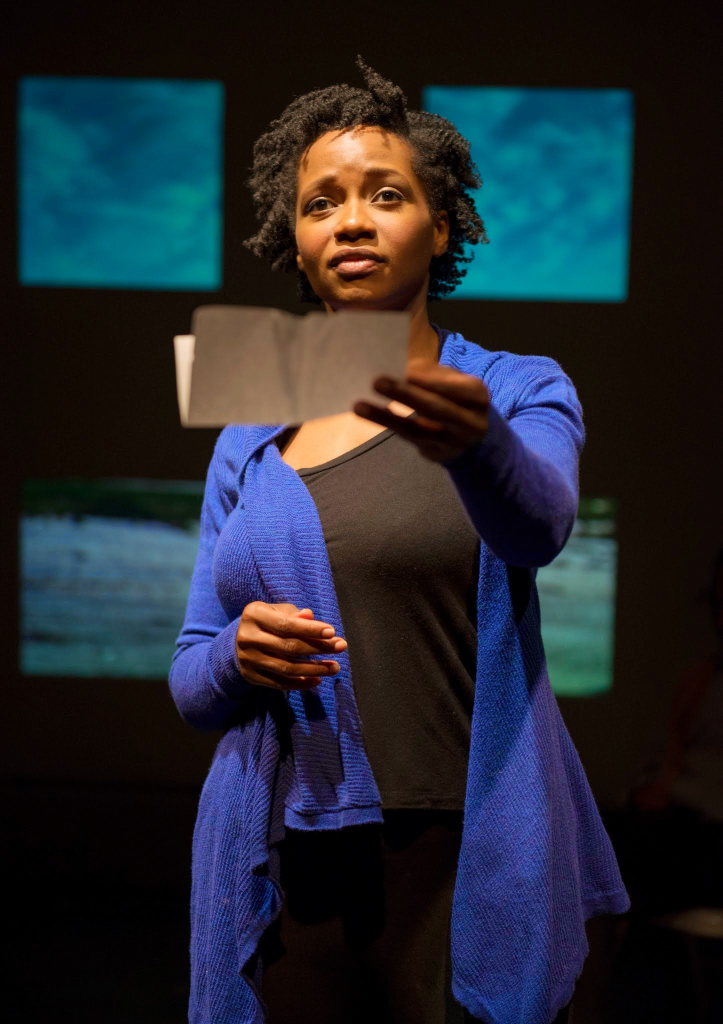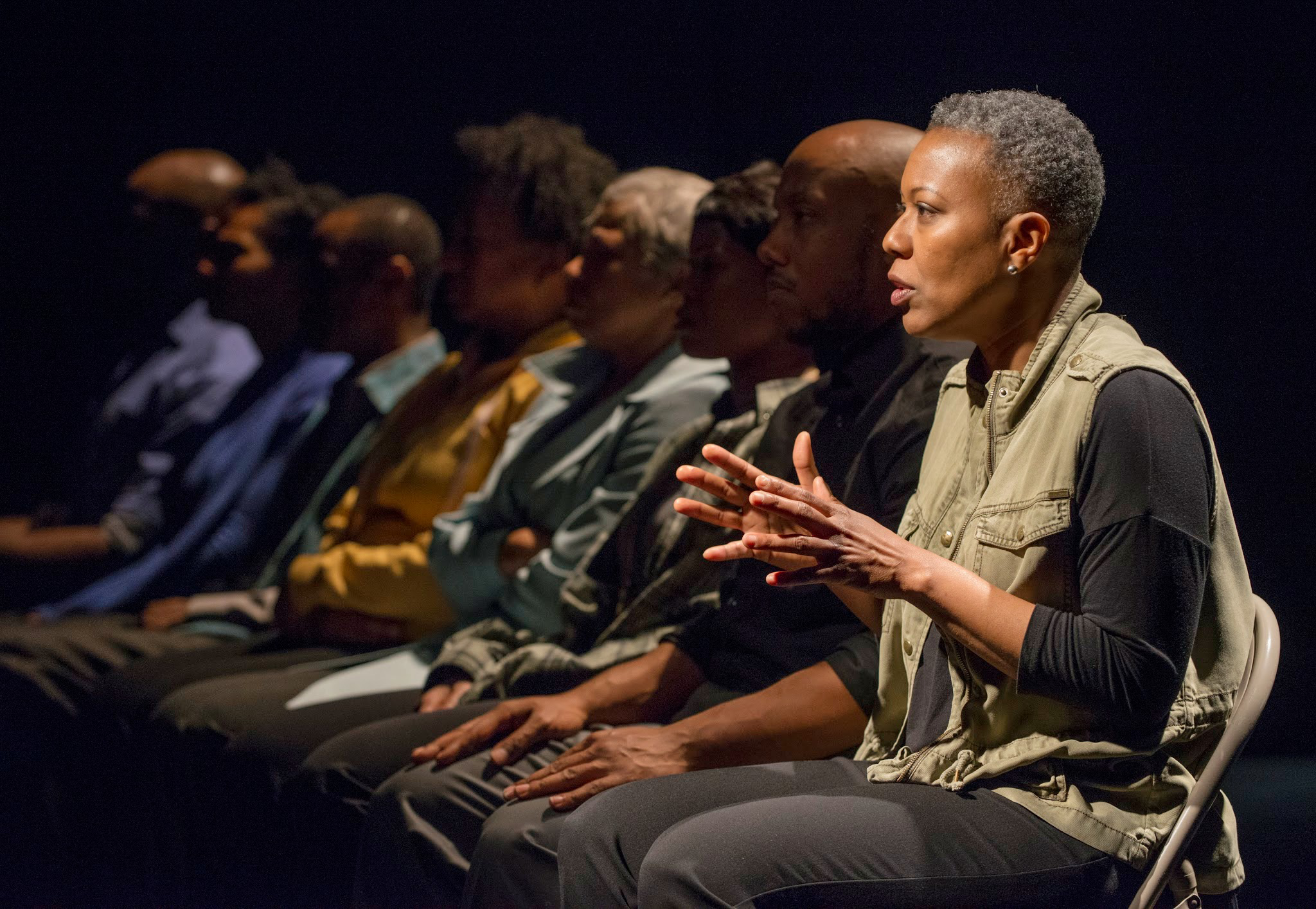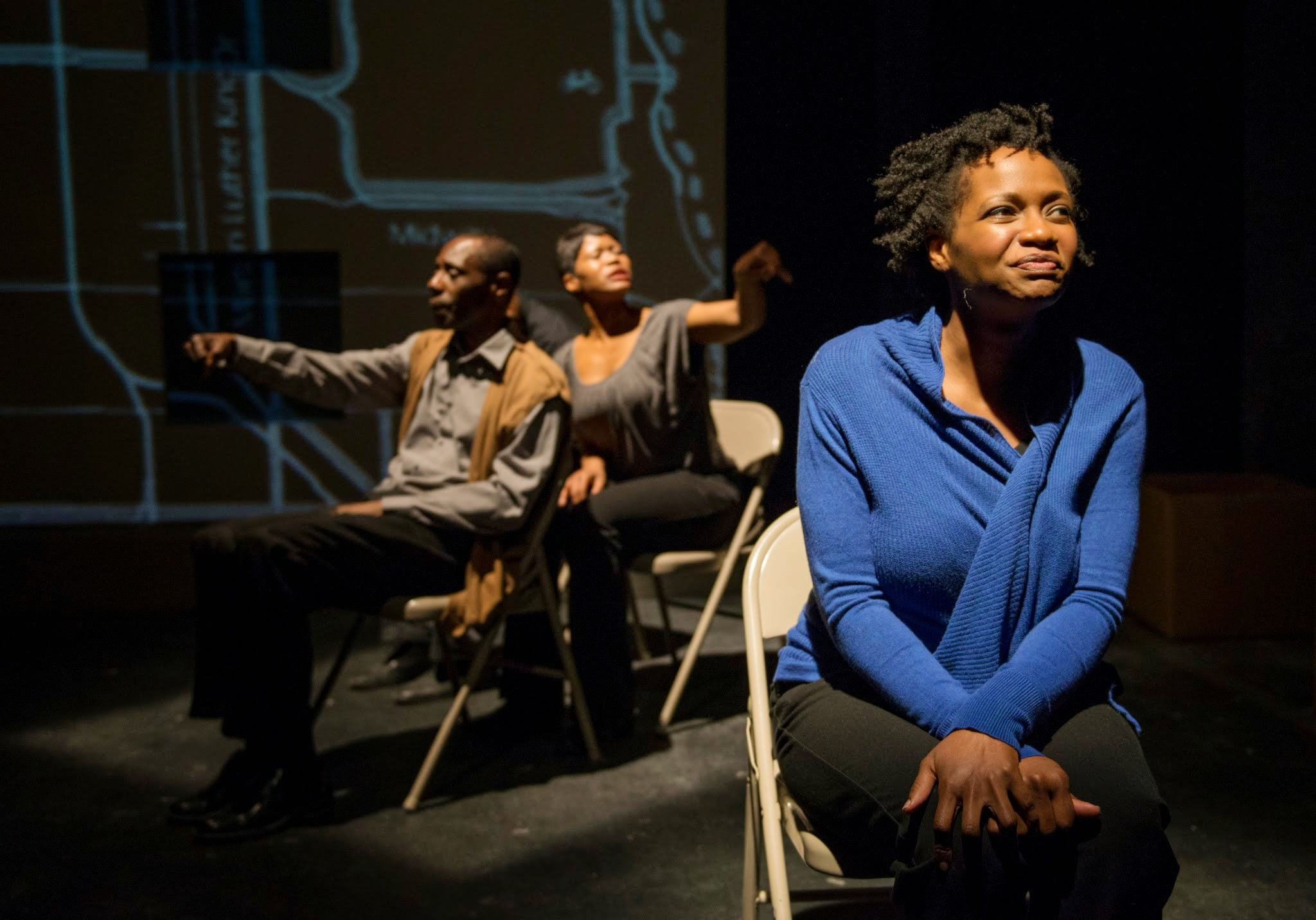People and space are inextricably interwoven—buildings, streets, and cities often define the formation of neighborhoods and communities. Sometimes experiments and new projects are undertaken; boundaries are redefined, communities pried apart, and buildings built or torn down. In the case of Chicago’s housing projects, the “project” was not contained to a classroom or laboratory but rather exerted tangible and long-lasting influences on the course of Chicago history and especially on the city’s residents.
In order to capture these residents’ stories, American Theater Company’s Artistic Director, PJ Paparelli, and co-writer, Joshua Jaeger, conducted over one hundred interviews over the span of five years with current and former tenants of Chicago’s public housing, as well as university scholars and public city officials. From these spoken and written accounts, they created The Project(s), a two-hour-long documentary play which encompasses almost a century of the Chicago Housing Authority’s public housing saga—decades of planning, building, tearing down, and rebuilding.
“Before we sat down to interview these residents, they didn’t know that their stories were valuable,” says Kevin Dorff, the ATC’s Artistic Fellow and one of the assistant directors for the show. “They didn’t know that someone wanted to listen to them.”
With a self-reflective title that hints at its untried nature, The Project(s) is almost as experimental as the subject matter it tackles. Although the play utilizes some typical components of a modern theatrical production—a barren wooden stage lit with bright circles of light, eight actors, sparse props that include aluminum chairs and boxes, a cappella singing—The Project(s) embraces its unconventional documentary style by abandoning typical stage dialogue. Standing somberly in a line, the actors preface the opening act by announcing that the content of the play is entirely factual, composed of texts taken from interviews, oral histories, newspaper articles, city documents, and books. Although the play is structured in a question-and-answer format, no single character is assigned the role of interviewer. Instead, the actors’ voices meld together to produce a neutral, external voice. The sound is collective, almost as if the audience as a whole is joining in to ask the questions, creating the impression of a conversation between the audience and characters rather than a one-sided show.
Each actor assumes a variety of roles, including professors, police officers, and public housing residents who range from well-known, outspoken individuals such as Timuel D. Black to everyday mothers, fathers, and children. These stories both complement and are juxtaposed with the factual narrative that is woven between them, further supporting the notion that history may never be singularly defined by a textbook, but is rather a collective agent composed of diverse voices. In addition to the question-and-answer format, the voices also blend together through performances of song, stepping, and dance.

When families first moved into the public housing units, many declared that it was “paradise.” With song and step, the actors express the initial energy these residents had. A moving scene is enhanced through complex interwoven beats of packing boxes and clapping hands. Destruction of the projects’ buildings is emotionally conveyed through the resounding clangs of chairs crashing to the ground. Later, the characters recount their experiences in the new, “transformed” CHA mixed-income public housing units. With strict regulations and screening criteria, many current residents claim that the transformations have merely created impersonal neighborhoods, or a “ghetto with no name.” By tearing down the projects, many families, friends, and neighborhoods have been dislocated, shaking up already-existing communities.
The Project(s) attempts to convey these individuals’ stories while simultaneously grappling with the long and convoluted history of the projects. “First we needed to create a skeleton of the historical moments to create the structure of the play,” says Sarah Slight, the play’s dramaturg and the ATC’s Literary and Grants Manager. “Then, this skeleton was filled in, fleshed out, with the human stories.”
Based on this framework, the play frequently returns to a factual sequence of events as told by the figure of a public housing scholar, a professor from Roosevelt University. With the use of a large display screen behind him, he tells of the rise and fall of public housing, listing facts and figures related to the projects. 19,000 youth, twenty-eight high rises, 4,415 units in Robert Taylor Homes alone, considered the largest public housing development in the United States. In Cabrini-Green, 15,000 people in 3,607 units. In total, twenty-nine traditional housing projects scattered among different neighborhoods.
The CHA was initially created through the Housing Act of 1937 with the purpose of providing low-cost housing for families who met numerous criteria. In the beginning, the majority of residents who lived in CHA housing were white, employed, married with children, and making no more than five times the cost of rent. Due to racial discrimination and restrictive covenants, most of the African-American population that moved to Chicago from the South began to move into public housing units like Cabrini-Green Homes and Ida B. Wells Homes after World War II, and later into even larger units like the Robert Taylor Homes in Bronzeville, built 1960–1962.
The play illustrates the transition from a safe, comfortable space for many families to the homes’ deterioration into restricted, confined areas lacking access to resources. After several highly publicized incidents of violence and crime, including the death of Eric Morse, a five-year-old boy dropped from the 14th floor of the Ida B. Wells complex, authorities decided to tear down the projects and replace them with low-rise, mixed-income public housing. The so-called “Plan for Transformation” began in 2000 under Mayor Daley, aiming to renovate or build 25,000 units of public housing, but it has been controversial among current residents, whose voices often aren’t heard in the greater political debate.
Near the end of the play, the Roosevelt University professor asks, “What went wrong?” A number of factors may have contributed to the ill-fated decline of the projects, but all in all, the play suggests that the greatest problem may be a general discomfort with actually assisting and empowering the poor in such a way that they are able to define their own communities and create their own homes, without the outside manipulation of government bodies or authorities. At the play’s end, audience members are left with one word reverberating in their minds. With lights slowly fading and voices softly chanting, the actors repeat, “Home…home…home….”
American Theater Company, 1909 West Byron Street. April 24-June 21, $38-48. May 24, free. Free tickets for former and current public housing residents. (773)409-4125 www.atcweb.org


